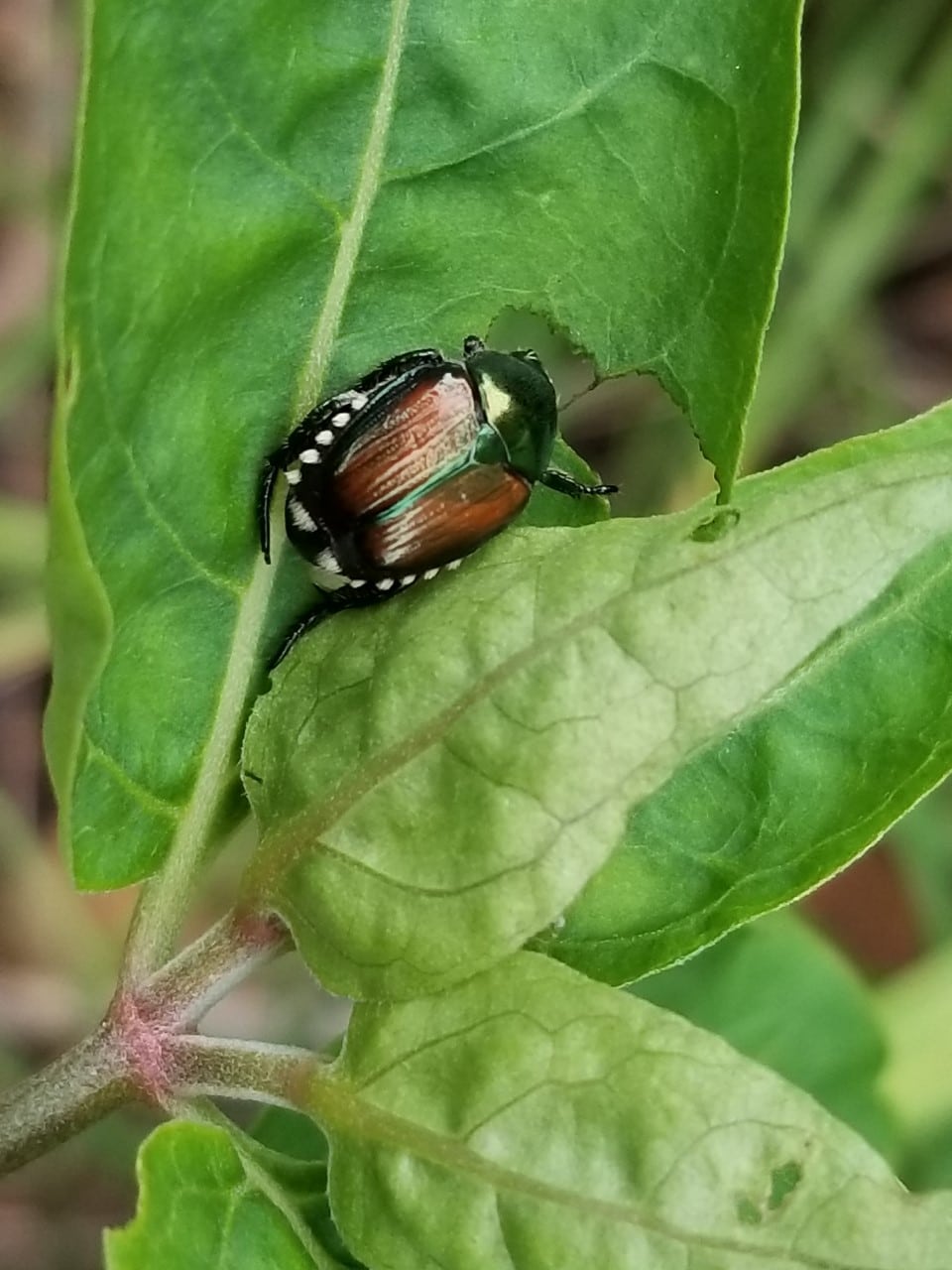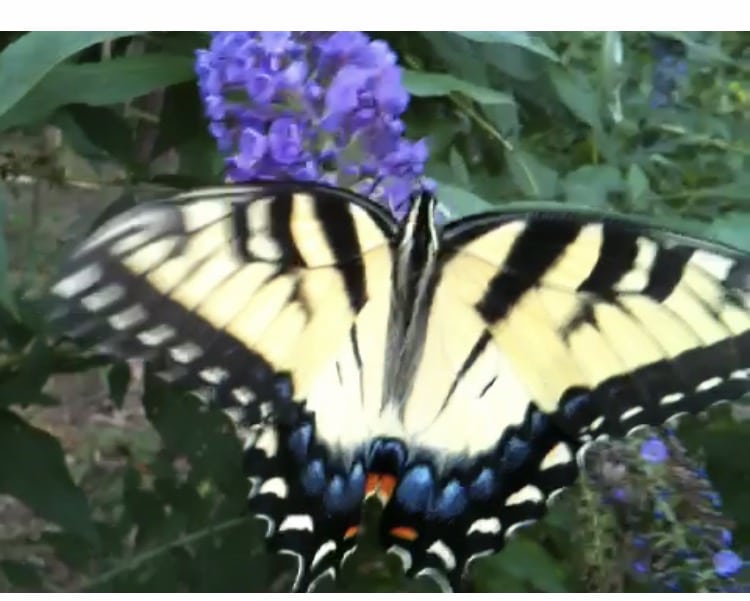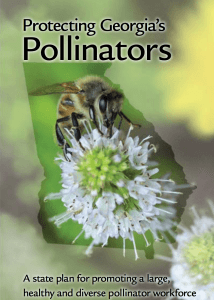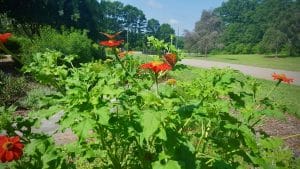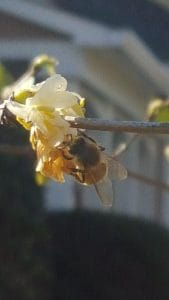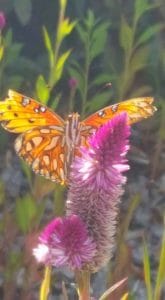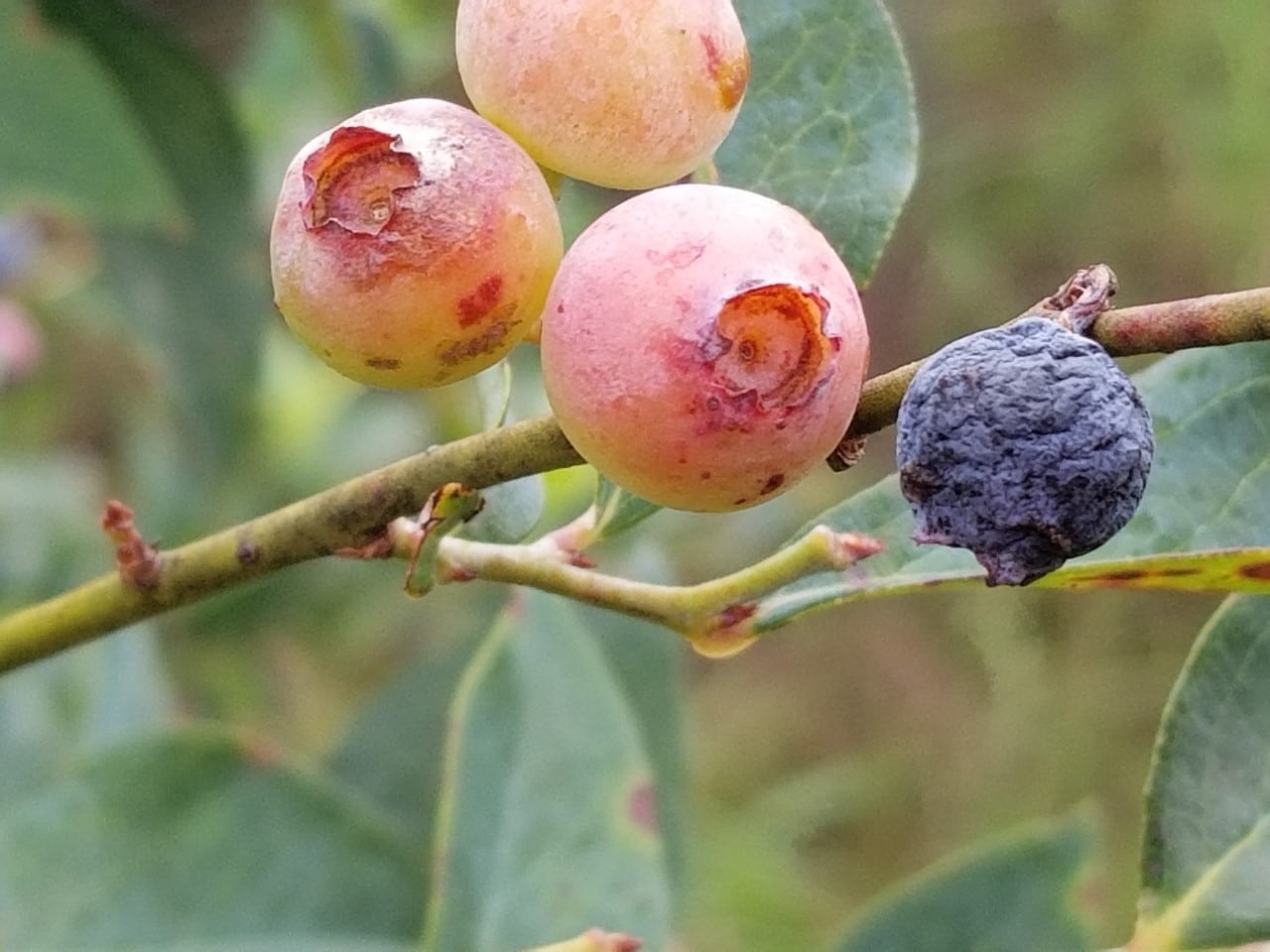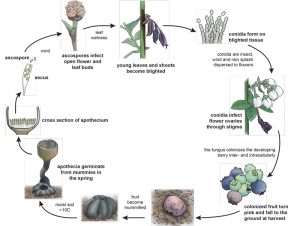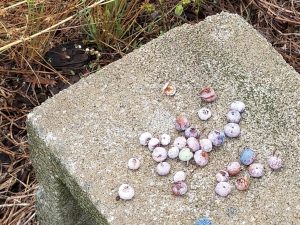Did you know that Japanese Beetles (Popillia japonica) feed on over 300 plant species? Plants in the rose or cherry families seem to be a favorite targets. The first one in my North Georgia garden appeared on June 1st.
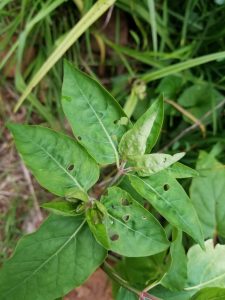
In the past gardeners reached for an insecticide to handle the problem. Sevin spray, Carbaryl (1-naphthyl N-methylcarbamate), was a popular choice. However, Sevin is a broad spectrum insectide that kills other beneficial insects! Sevin kills over 100 different insect species, including bees.
If you want to attract the beetles to your garden, add a pheromone trap. You will attract them from all over your area. Seriously, they will bring more beetles to your garden. Maybe you can talk a neighbor into purchasing one!
There is an easier way to handle a Japanese Beetle infestation.
Fighting Back!
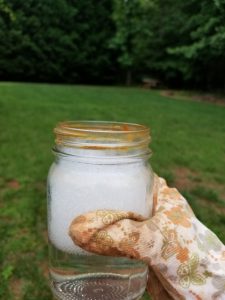
To control the beetles simply pick them off of your plants and drop them in a jar of soapy water. Be aware that they will fly away so act quickly. So practice your technique of grabbing or forcefully knocking the insects into the jar. They will drown quickly.
When I was younger my family planted a fruit orchard. When the orchard was young one of my jobs was to pick off Japanese Beetles and deposit them into a jar of gasoline I carried around the orchard. Wow, the gasoline was not needed. Soapy water works just as well.
Worst case scenario, hang in there. They won’t be around for long!
Happy Gardening!
